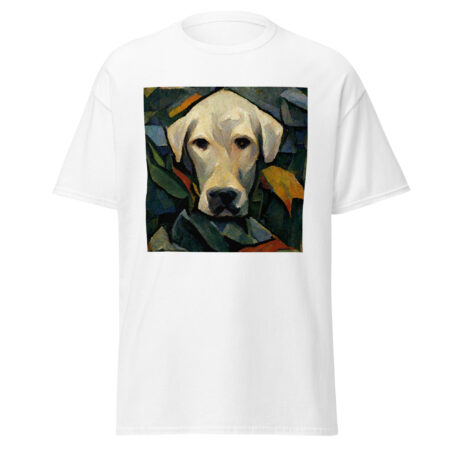Dogs are the most popular pet in the United States, with nearly 70 million owned by households and there are over 400 recognized breed dogs. Read more of our dog facts below!
Dogs Are Descended From Wolves
It is widely believed that dogs are descended from wolves, and a great deal of evidence supports this theory. For instance, dogs and wolves share many physical features, such as a long snout, erect ears, and a bushy tail. In addition, they both exhibit similar behaviors, such as howling, playing with toys, and forming packs. Furthermore, dogs and wolves can interbreed and produce healthy offspring. However, there are also some crucial differences between the two species. For instance, dogs are much smaller than wolves and have a significantly shorter lifespan. Additionally, while all dogs share some level of domestication, many breeds are wild. Nevertheless, the similarities between dogs and wolves suggest they are closely related.
Dogs Have Been Domesticated For Over 10,000 Years
The first dog was domesticated over 10,000 years ago, making it one of the oldest domesticated animals. Since then, dogs have played an essential role in human society, serving as loyal companions, working animals, and even: assistants. In recent years, the bond between humans and dogs has only grown more robust, with more and more people viewing their furry friends as family members. This is evident in how people now care for their dogs, providing them with high-quality food, comfortable beds, and plenty of toys. Domestication has profoundly impacted dogs and humans, creating a lasting bond that will continue to grow for centuries.
Dogs Can Be Trained To Do A Variety Of Tricks
Dogs are known for their loyalty and obedience, but they are also intelligent creatures that can be trained to do various tricks. The most popular schemes include rolling over, playing dead, and fetching things. However, dogs can also be taught to jump through hoops, balance on their hind legs, and even dance. Training a dog requires patience and consistency, but the rewards are well worth the effort. Dogs that know tricks are not only more fun to be around, but they are also more likely to be adopted from shelters and rescue organizations. So if you’re looking for a new trick to teach your furry friend, look no further than your own backyard.
There Are Over 400 Recognized Breeds Of Dogs In The World
Dogs have been bred for thousands of years for various purposes, and as a result, there are now over 400 recognized breeds. While all dogs are descended from wolves, the variety of shapes, sizes, and temperaments seen in today’s dogs result from centuries of selective breeding. Some dogs were initially bred for hunting or herding, while others were developed for tasks like guarding property or pulling sleds. Today, many people choose to adopt a dog based on their personal preferences in size, coat type, or personality. No matter what breed you choose, owning a dog is sure to bring plenty of love and companionship into your life.
Dogs Are The Most Popular Pet In The United States
Dogs have been a part of human life for centuries, and their popularity is only increasing. In the United States alone, nearly 70 million dogs are owned by households. Dogs offer companionship, love, and loyalty unmatched by any other pet. They can also be trained to perform various tasks, from guarding the home to assisting people with disabilities. In addition, dogs can help to reduce stress levels and improve mental health.
Dogs CAN See In Color
Dogs are known for their exceptional sense of smell, but did you know that they can also see in color? While the human eye contains just three types of color-sensitive cells or cones, dogs have two additional types, which means they can see a broader range of colors than we can. In fact, studies have shown that dogs are particularly good at distinguishing shades of blue and yellow.
Moreover, the part of a dog’s brain that processes color information is larger than the equivalent area in human brains. This may be because dogs rely more heavily on visual cues than we do. After all, their sense of smell is 50 times more powerful than ours, so they don’t need to rely on color to find their way around. Nevertheless, dogs have some serious advantages when seeing the world around them.
A Dog’s Lifespan Typically Ranges From 10 To 14 Years
A dog’s lifespan is relatively short when compared to humans. The average lifespan of a dog is 10-14 years, though some breeds can live up to 20 years or more. While this may seem like a long time to some, it is a very short considering the average human lifespan is about 70 years. In fact, 10-14 years is such a short time that many owners choose not to get another dog after their first one passes away.
However, many people decide to get another dog immediately after their first one dies because they cannot bear the thought of living without a furry friend. No matter how you feel about it, losing a dog is always tricky. But knowing that they lived a full life, surrounded by love, can help ease the pain.
Dogs Need Exercise And Plenty Of Proper Nutrition
While all dogs need some form of exercise, the amount will vary based on the breed and age of the dog. For example, herding and working dogs may need more than two hours of exercise per day, while toy breeds may only require about 20 minutes. In addition to breed and age, a dog’s health and energy level will also impact how much exercise they need. A healthy dog with plenty of energy will often require more exercise than a dog that is sick or elderly.
Proper nutrition is also essential for keeping dogs healthy. Dogs need a balanced diet with vital nutrients, vitamins, and minerals. For most dogs, this can be provided through high-quality commercial pet food. However, some dogs may require special diets due to health problems or food allergies. Consult with your veterinarian to determine what food is best for your dog. Lastly, remember that every dog is different, and their exercise and nutritional needs may change over time. Regular check-ups with your veterinarian can help ensure your dog gets everything they need to stay healthy and happy.








